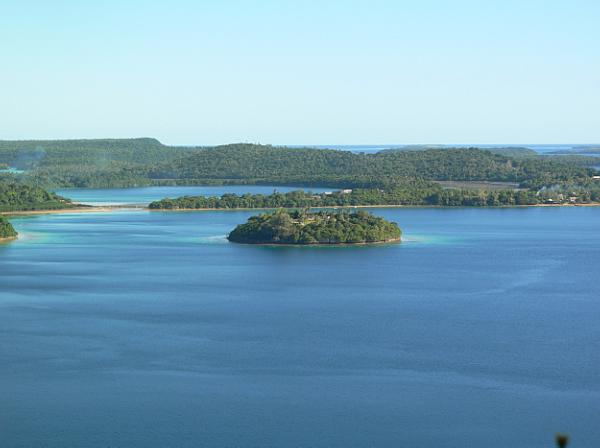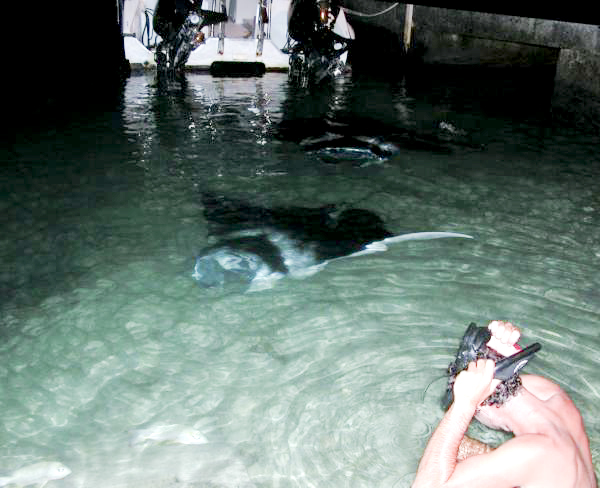Published in the Ocean Watch column, Honolulu Star-Advertiser © Susan Scott
June 6, 2008
In response to my May 23 column about jumping rays, I received an e-mail from Laie reader Vonn, who offered another explanation as to why rays leap.
According to Vonn’s father and grandfather, in traditional Hawaiian culture rays jump to announce a pregnancy.
“I was overjoyed when a ray jumped around me and of course told my wife the happy news,” Vonn wrote. “Her skepticism melted away when our doctor confirmed what the hihimanu (eagle ray) already told me.”
A manta ray, or hahalua, gave another reader, Terry, a different treasured experience. The 20-minute encounter happened at Puako, a dive and snorkel spot on the Big Island.
Terry wrote that the ray approached him, seemingly wanting to play.
“The manta started rolling toward me and each time would get closer and closer,” he wrote. “Then all of a sudden he (or she) stopped a foot from my face and just stayed there looking into my mask.”
For friendliness toward humans, Terry ranks manta rays with spinner dolphins. Sailors of old, however, feared these big black fish, calling them devil rays.
I see their point. Although these creatures are gentle and have no stingers, mantas grow to 23 feet across and weigh up to 3,500 pounds.
Years ago a Molokai angler told me that while he was fishing in his small boat off Kaunakakai, a huge manta ray jumped from the water right next to him. It was terrifying, he said, because the ray was so big that had it flopped his way, its body would have covered the entire boat.
Most manta sightings, though, are less dramatic.
My most recent encounter occurred last year as I sailed from the Cook Islands to Tonga’s Vavau Islands. The voyage took eight hard days, and at daybreak I wearily headed into the entrance of this protected circle of islands.
Then, as my crew and I marveled at the beauty of the morning sun on Vavau’s towering cliffs and admired the lagoon’s calm, blue water, a manta ray leaped clear off the surface.
This was a coincidence, of course, but it was a grand introduction to these friendly isles. Even the rays there, it seemed, welcomed us with open arms.
 Vavau Island Group, Tonga
Vavau Island Group, Tonga
In Palmyra the manta rays were almost like pampered pets. While commuting by kayak to my study site there, I sometimes had to steer around the eating, twirling or cruising rays. These 8- to 10-foot-wide fish had the right of way and knew it.
At night, when the harbor lights were on, the mantas would come to the pier to eat plankton attracted by the light. We snorkeled with the rays then, and they paid us such little mind, one smacked right into me.
The collision startled us both, me more than the ray. In seconds the manta was back to eating. I got out of the water and took pictures.
 Manta Ray, Palmyra
Manta Ray, Palmyra
On the Big Island’s Kona Coast, some hotels shine lights on the water at night specifically to attract manta rays. Watching these rays scoop plankton into their mouths with their odd head fins is a remarkable sight.
In some places you can slip into the water and swim with these friendly rays. The water feels cold at night, but getting close to these amazing creatures gives you chicken skin whether it’s cold or not.
My reader Terry wrote, “I’ve had two encounters with manta rays and both were extraordinary experiences.”
That, I believe, is the only kind there are.
All photos by Susan Scott